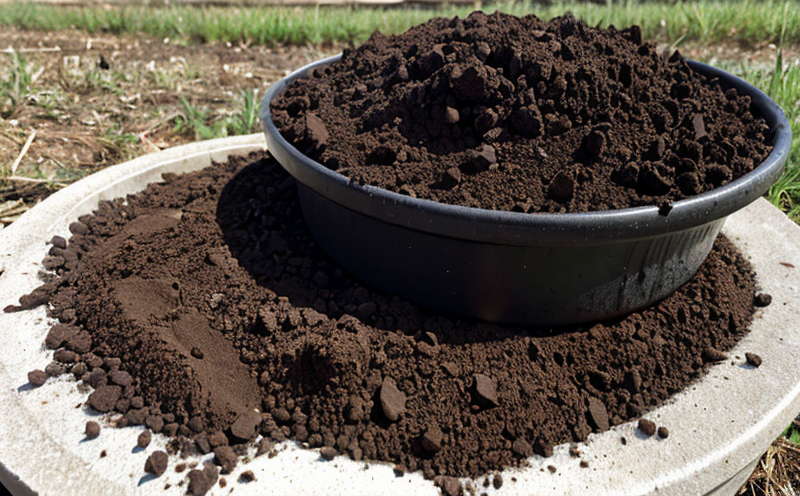EPA SW 846 Method 1312 Synthetic Precipitation Leaching Procedure SPLP Validation Method Development Test
The EPA SW 846 Method 1312 test is designed to assess the leachability of contaminants from solid waste materials and byproducts. This method, known as the Synthetic Precipitation Leaching Procedure (SPLP), provides a robust framework for evaluating how various constituents in solid waste might leach into their environment under conditions that simulate acid rain or other aggressive precipitation events.
During this test, a synthetic leachate is prepared and used to extract contaminants from the sample. The SPLP method involves controlled mixing of the waste material with the synthetic leachant over time. The resulting extracts are then analyzed for their chemical composition, including metals, organic compounds, and other potentially harmful substances.
The test is particularly important in environmental compliance contexts where understanding the potential risks posed by solid waste materials is crucial. By validating methods used to assess these risks, EPA SW 846 Method 1312 ensures that regulatory standards are met consistently across different testing scenarios.
This method is essential for industries dealing with hazardous waste, mining residues, and other contaminated materials. It helps in determining the leachability of contaminants from these byproducts under simulated environmental conditions, providing critical data for waste management strategies and compliance programs.
The SPLP test can be used to validate a wide range of methods aimed at assessing solid waste leachate. This includes not only traditional laboratory tests but also new and innovative approaches being developed in the field of environmental science. By ensuring that these methods are accurate, reliable, and consistent with regulatory standards, EPA SW 846 Method 1312 plays a pivotal role in advancing sustainable waste management practices.
The test protocol is meticulously detailed to account for various factors that could influence leachability outcomes, such as temperature, pH levels, and the type of synthetic leachant used. This comprehensive approach ensures that the results are representative of real-world scenarios, thereby enhancing their relevance and applicability in regulatory contexts.
Understanding the nuances of this test is critical for quality managers, compliance officers, R&D engineers, and procurement teams involved in waste management projects. By mastering these methods, professionals can effectively navigate complex compliance requirements and contribute to more sustainable environmental practices.
Why Choose This Test
- EPA SW 846 Method 1312 provides a standardized approach to assessing the leachability of contaminants in solid waste, ensuring consistent and reliable results.
- The method is particularly useful for industries dealing with hazardous wastes, mining residues, and other contaminated materials, allowing them to meet regulatory standards more effectively.
- By simulating conditions that mimic acid rain, this test offers a realistic assessment of how waste materials might behave in real-world environments.
- The SPLP procedure ensures accurate data on the leachability of contaminants, supporting informed decision-making and sustainable practices.
Quality and Reliability Assurance
EPA SW 846 Method 1312 is renowned for its stringent quality control measures. The test ensures that all samples are handled consistently according to the specified protocols, minimizing variability in results. This consistency enhances reliability across different testing scenarios.
Our laboratory adheres strictly to these standards, employing trained personnel and state-of-the-art equipment to conduct rigorous analyses. We maintain meticulous documentation of each step in the process, ensuring that every aspect of the test is accurately recorded and traceable.
The use of standardized synthetic leachants and controlled environmental conditions further enhances the accuracy and precision of the results. These measures not only ensure compliance with regulatory requirements but also provide valuable insights for waste management and recycling initiatives.
Our commitment to quality extends beyond just the execution of the test itself. We continuously monitor our processes, updating them as necessary to incorporate new methodologies and technologies that improve accuracy and efficiency. This proactive approach ensures that we remain at the forefront of environmental testing practices.
International Acceptance and Recognition
EPA SW 846 Method 1312 enjoys widespread international acceptance, recognized by regulatory bodies around the globe for its reliability in assessing solid waste leachability. This method is referenced in numerous international standards including ISO and ASTM.
The SPLP procedure is particularly favored by countries with stringent environmental regulations due to its comprehensive approach to evaluating potential risks posed by solid waste materials. Its widespread use ensures that results are comparable across different jurisdictions, facilitating global compliance efforts.
By adhering to this standard, laboratories can ensure their testing methodologies align with international best practices, thereby gaining credibility and trust among industry stakeholders and regulatory authorities alike.





